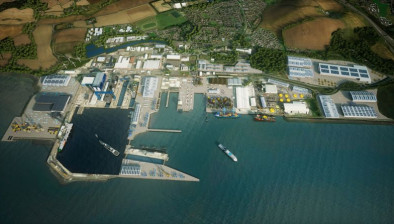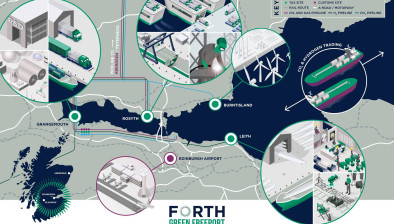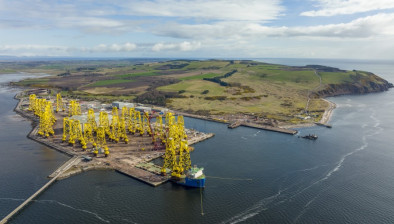Forth Green Freeport ‘officially open for business’, unlocking £7bn investment potential

Dame Susan Rice – Chair of Forth Green Freeport
The Forth Green Freeport (FGF) has officially opened for business, unlocking investment incentives for the region.
This follows approval from the Scottish and UK governments of its outline business case and the designation of three tax sites in Grangemouth, Rosyth, and the Mid-Forth region (Leith and Burntisland).
The milestone for the public / private consortium, which is chaired by Dame Susan Rice DBE, will attract new businesses and new jobs into the FGF area, aided by a suite of financial incentives to deliver major economic and net zero benefits for Scotland as a whole and the local communities in Fife, Falkirk, Leith and beyond.
Focusing on key sectors like offshore wind, hydrogen, sustainable fuels, modular manufacturing, and logistics, the freeport will support the re-industrialisation of Central Scotland and large-scale economic regeneration over the next decade.
Forecasts indicate that there is the potential to attract £7 billion of private and public investment over the next decade, delivering gross value added (GVA) of £8.4bn. This could generate up to 38,350 well paid, highly skilled, green jobs, with almost 19,000 of these being direct gross jobs linked to the FGF’s target sectors and tax sites.
Dame Rice, chair of FGF, said: “Through innovations in offshore wind manufacturing, assembly and commissioning, alongside innovative shipbuilding, modular assembly and hydrogen manufacture, the country’s net zero targets can be boosted by Forth Green Freeport.
“This is a long-term project and one which we know will deliver real benefits to the local communities through economic growth, skills re-training and training and access to high quality, green jobs.”
The potential of the FGF was highlighted by the news that Vestas has identified the Port of Leith as a possible location for a wind turbine blade manufacturing facility. This is an example of how Green Freeport status can be used to boost Scotland’s renewable energy credentials with the potential to create hundreds of quality, green jobs in Scotland, supporting the just transition to net zero.
The investment incentives will apply to businesses committed to adhering to a set of investor principles, including the Fair Work Charter and net zero commitments.
Strong governance, with a board comprising public and private sector members, will ensure the FGF operates to the highest standards. It comprises representatives from all consortium partners and includes elected members from all three local authorities and advisers from both the Scottish and UK governments. An invitation has also been extended to the Scottish Trades Union Council (STUC) to have a worker representative on the board.
Dame Rice added: “Workers’ rights will be protected, money will be spent wisely and all of the investors we attract to benefit from the incentives that the Green Freeport offers will be as committed as we are to ensuring that the most significant beneficiaries from this long-term initiative are the people from the communities around the Forth Green Freeport.”
The three tax sites, spanning 533 hectares, are strategically located to drive growth in key industries and support the just transition to alternative fuels and energy sources.























